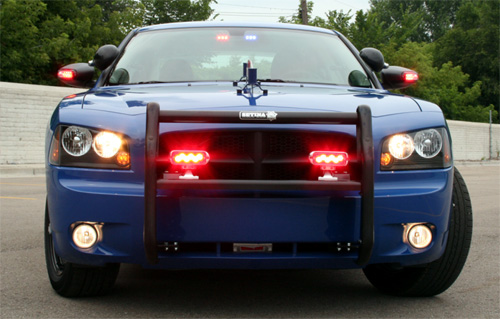In 2016, firearms related-incidents claimed the lives of 64 police officers — a significant spike from the previous year. In fact, they were the leading cause of death in 2016 for law enforcement officers.
Typically, we hear about officers who are missing, injured or killed on the news and over social media, after the fact. However, the National Blue Alert System (NBAS) was created to provide a national network of real time assistance to law enforcement officers to help other officers in danger.
The idea of a blue alert system is not entirely new. Similar alert programs were being run by individual states for the past several years. However, the 2014 ambush-attack that took the lives of New York Police Department officers Rafael Ramos and Wenjian Liu, fueled the push to create a national system that would link the states’ programs into one network. In 2015, former President Obama signed The National Blue Alert Act.
While it received bi-partisan and civilian support, the National Blue Alert System has only been implemented in a little more than half of the United States.
How Does the National Blue Alert System Work?
The NBAS is a nonprofit organization working at the federal, state, and local levels to issue alerts on the following incident types:
-
-
- Officer has been killed or seriously injured.
- The criminal poses serious threat to general public AND other law enforcement personnel.
- Suspect’s name or specific details about the criminal and/or their vehicle have been determined and can be made available for public broadcast.
-
The NBAS uses state media broadcasting systems and Department of Transportation messaging signs to communicate the alert — typically for a 48 hour period. The National Blue Alert System works similar to an Amber Alert, using broadcast radio and television, billboards, highway LED signs, and SMS message to communicate an emergency message to law enforcement as well as civilians.
Why Isn’t Everyone Using the National Blue Alert System?
Nationwide alert systems such as the Amber Alert and the Silver Alert have saved many lives since their inception. So you would think that adopting the NBAS would be a no-brainer.
While The National Blue Alert Act of 2015 was well-received in Congress and signed quickly, it has since lost momentum. This is mainly due to the fact that while Congress required the Justice Department to run the program, it did not appropriate any funds to do so.
Implementation costs and, for some, fears around sharing sensitive information through the alerts seem to have slowed adoption.
Federal lawmakers estimated that adopting the system nationwide would cost upwards of $1 million. Here in Michigan, which adopted the NBAS in 2015, the state paid $20,000 for implementation and pays $300 for monthly upkeep.
The Latest Developments
In June 2017, the Federal Communications Commission (FCC) approved preliminary rulemaking in order to add Blue Alerts to the FCC’s Emergency Alert System (EAS).
As for state-by-state adoption, earlier this month Missouri became the 28th state to adopt the system.
How Can I Access the National Blue Alert System?
You can visit the Blue Alert System website to sign up for alerts or make a donation to support their mission. It’s free and only takes a minute to sign up. Civilians can also receive blue alerts via Twitter by following @BlueAlertUs, @BlueLineAcross, or @PoliceOne.


